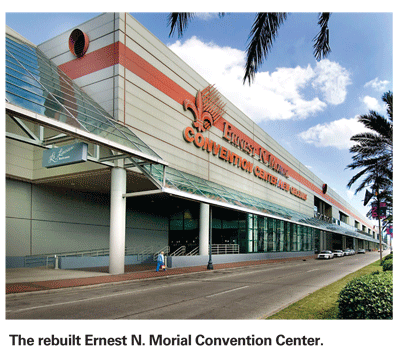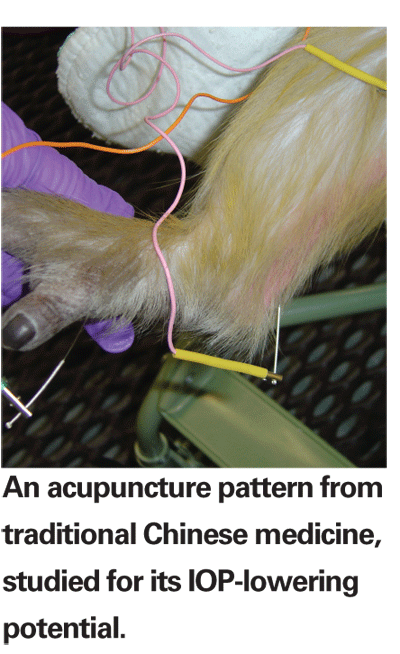With
"Our attendees had a blast," says Kathryn Goldstein, director of communications for Meeting Professionals International. "Everyone bent over backwards to give us a great conference." Though not an exceptionally large meeting—Goldstein estimates 2,600 attendees—the MPI conference, held in January, is notable for its impact on future professional meetings held in
"It's the same
The 
Lucien Salvant, managing director of public affairs for the National Association of Realtors, says his organization had been observing
"People felt they were really contributing by supporting the city by being there. That was a very tangible feeling around the place," says ACC's Ms. Hamilton. "The city's in transition and so you have to be very aware of what was going on in all the areas that support a major city-wide [convention]."
Because the ACC is comparable in size to the AAO, its meeting provides the most useful barometer for success in November. "In terms of registration, people were very comfortable with the numbers that we ended up with," Ms. Hamilton says. More than 400 companies exhibited, slightly fewer than previous years, and the College's grant support exceeded budget, leading organizers to label it a success.
The College worked closely with the New Orleans Metropolitan Convention & Visitors Bureau, the police department, hotels and the convention center to be sure that everything would be ready for their attendees. "No association could assume it would be fine without a rigorous review process," Ms. Hamilton says. The ACC communicated to its members all that it was doing to prepare, particularly as regards safety.
The city and police department understand the safety concerns and are taking action to address them. "Crime is not unique to
The NOPD says the majority of crimes in the city surround drug selling, accounting for 85 percent of homicides. Compared to 2005-2006, crimes are down. Violent crime has dropped 22 percent while non-violent crime has fallen 25 percent.
The police department has been vigilant about keeping those numbers down. The state of
The AAO expects a strong turnout in spite of anxieties. "
Since Katrina,
Everything points toward a successful convention for the AAO. Services that conventioneers might need are all up and running. "They have gone out of their way to cooperate with us and work with us to make sure our experience has been great," says Dr. Holland.
"I think if you come you'll love our city," says Sgt. Narcisse. "Once you've been here, you'll want to come again."
AMO Recalls Contact Solution
Advanced Medical Optics last month voluntarily recalled its Complete MoisturePlus contact lens solutions. The company said the move was in response to information received from the U.S. Centers for Disease Control and Prevention regarding eye infections from Acanthamoeba, a naturally occurring water-borne organism that can contribute to serious corneal infections.
CDC completed interviews with 46 patients who had developed Acanthamoeba keratitis since January 2005. A total of 39 of these patients were soft contact lens wearers, 21 of whom reported using Complete MoisturePlus products. The CDC estimates a risk of at least seven times greater for those who used Complete MoisturePlus solution versus those who did not.
AMO says there is no evidence to suggest that the voluntary recall is related to a product contamination issue, and this does not impact any of the company's other contact lens- care products. AMO encourages consumers to discontinue the use of AMO Complete MoisturePlus until further information is available. Given the potential seriousness of the reported Acanthamoeba infections, AMO is working in close partnership with the CDC, the FDA and others to make sure consumers are aware of the need for proper contact lens disinfection and proper lens handling.
Consumers who believe they are in possession of the recalled product should discontinue use immediately and call 1 (888) 899-9183. Adverse reactions experienced with the use of this product and/or quality problems may be reported to AMO at 1 (800) 347-5005 and to the FDA's MedWatch Program by phone at 1 (800) FDA-1088, by fax at 1 (800) FDA-0178, by mail at MedWatch, HF-2, FDA, 5600 Fishers Lane, Rockville, MD 20852-9787, or on the MedWatch website at fda.gov/medwatch.
Acupuncture for Glaucoma?
The quest for an effective method of managing intraocular pressure has reached into traditional Chinese medicine, in the form of an ARVO study at the
The masked, randomized study of the efficacy of electro-acupuncture as a treatment for glaucoma found that one of two different sets of acupuncture points cut elevated IOP in half in male rhesus monkeys. [Brooks DE, et al. IOVS 2007;48:ARVO E-abstract 1281.] The beneficial effect gradually wore off over a period of days.
Twelve monkeys underwent argon laser photocoagulation of the trabecular meshwork in one eye to produce an elevation in IOP; the other eye served as a control. The subjects were randomly divided into three groups: one received no treatment, while each of the remaining groups received a single treatment using one of two acupuncture patterns from traditional Chinese veterinary medicine.

One of the patterns produced a dramatic drop in pressure in the altered eye, from a mean IOP of 41.1 ±8.3 mmHg to 20.9 ±3.3 mmHg one hour post-treatment (p<0.05). IOP was still significantly lower at 24 hours (26.6 ±9.3 mmHg) and 48 hours (27.9 ±3.8 mmHg), but was not significantly lower than baseline by 72 hours (32.6 ±7.1 mmHg). The other two groups showed no significant changes in IOP. Perhaps most notable, IOP in the normal eye of the successfully treated group remained normal, even though treatment was systemic and pressure in the elevated eye was cut by 50 percent. This suggests that the effect was one of normalization rather than pressure reduction per se.
"The therapeutic results of traditional Chinese medicine are sometimes phenomenal," says the principal investigator, Shauna Cantwell, DVM, clinical assistant professor of anesthesiology and pain management in the



